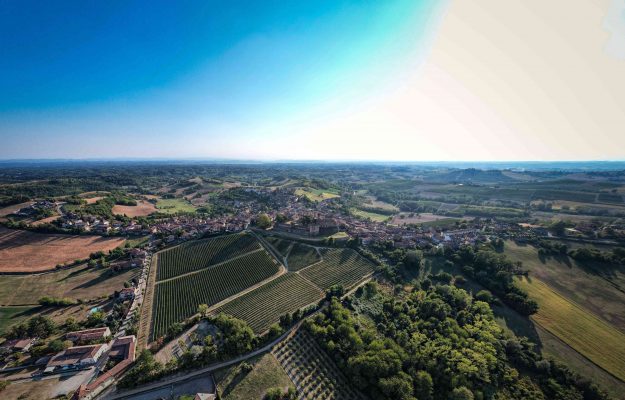Barbera today is the most widespread and cultivated Piedmont vine, and Monferrato is the territory of choice. However, Barbera has been considered one of the most important varieties of Italian ampelography (classification of vine varieties) for at least a couple of centuries, that is, since Giorgio Gallesio, one of the greatest botanists of all times, inserted it in his treatise, “Pomona Italiana”. It is an every day wine, counterbalanced in the glass of the “wine of kings”, Nebbiolo, but Barbera is the number one star of Monferrato wines’ success. It has closed 2021 with 65 million bottles produced and a turnover of 400 million euros, revealed data from the Barbera d'Asti e Vini del Monferrato Consortium.
The merit goes to the galaxy of 9 DOC and 4 DOCG wines, in which there are, respectively, 20 million bottles of Barbera d’Asti and 5 million bottles of Barbera d’Asti stand out (+5.6%). In addition, the exponential growth of Monferrato’s wine gems, such as Nizza, which counts 70 companies in the Nizza Producers Association, led by Stefano Chiarlo. Production has been more than 700.000 bottles (+ 13%), which achieved an average price of 20 euros, on the shelf. Further, there is a grape variety that risked disappearing from the Piedmont wine maps, and instead has been rediscovered a trend, Ruchè di Castagnole Monferrato, which for the first time has produced over a million bottles.
Another Italian wine gem, Albugnano, is ideally acting as a link between Monferrato (whose borders, according to popular history, Emperor Otto I in the 10th century granted), and one of the most dynamic Italian wine districts, Langhe that together with Roero, represent the first Italian wine landscape recognized as a UNESCO World Heritage Site, for its exceptional beauty and historical tradition linked to vine cultivation. It is produced in only 4 Municipalities of Monferrato, from Nebbiolo grapes, and just 60.000 bottles (+ 18%). there is more to report, “Piemonte Rosato” at +142% produced one and a half million bottles, while Piemonte Rosso (+ 42%) 2.4 million bottles.
These are, therefore, the Monferrato wine numbers in the land of Barbera, but not only, as it is closely linked to nearby Langhe. They share a wine culture deeply rooted in the community, and a common popular history, made up of the hands of generations of people who have worked the land, as well as traditions and rituals. Moreover, small villages and hills of vineyards bearing names of other eras that surround them, farmhouses and castles, are found in some of the most beautiful pages of Italian literature, from Cesare Pavese to Giuseppe Fenoglio. Fenoglio described these places and narrated the Resistance, the most important moment of Italian popular struggle, better than any other writer.
Focus - The Consortium Barbera d’Asti and Wines of Monferrato in 2021... in the words of president Filippo Mobrici
“Obviously, it was a difficult year for us, as it was for everyone, however, various indicators are telling us that not only we have held our positions very well, but Barbera d’Asti e Vini del Monferrato Consortium are also growing in numbers and, above all, in quality. This means not only that professionalism pays, but so does our producers’ competency in investing in the territory, making themselves the ambassadors of these wonderful UNESCO heritage lands. It is not a question of celebrating one wine rather than another here. Each of our DOC and DOCG has characteristics that make them unique. We are insisting on this path, in the wake of tradition and change as well as extraordinary collective work. The result is that more and more entrepreneurs, including those not from Asti, are investing in our vineyards”.
Copyright © 2000/2025
Contatti: info@winenews.it
Seguici anche su Twitter: @WineNewsIt
Seguici anche su Facebook: @winenewsit
Questo articolo è tratto dall'archivio di WineNews - Tutti i diritti riservati - Copyright © 2000/2025









































































































































































































